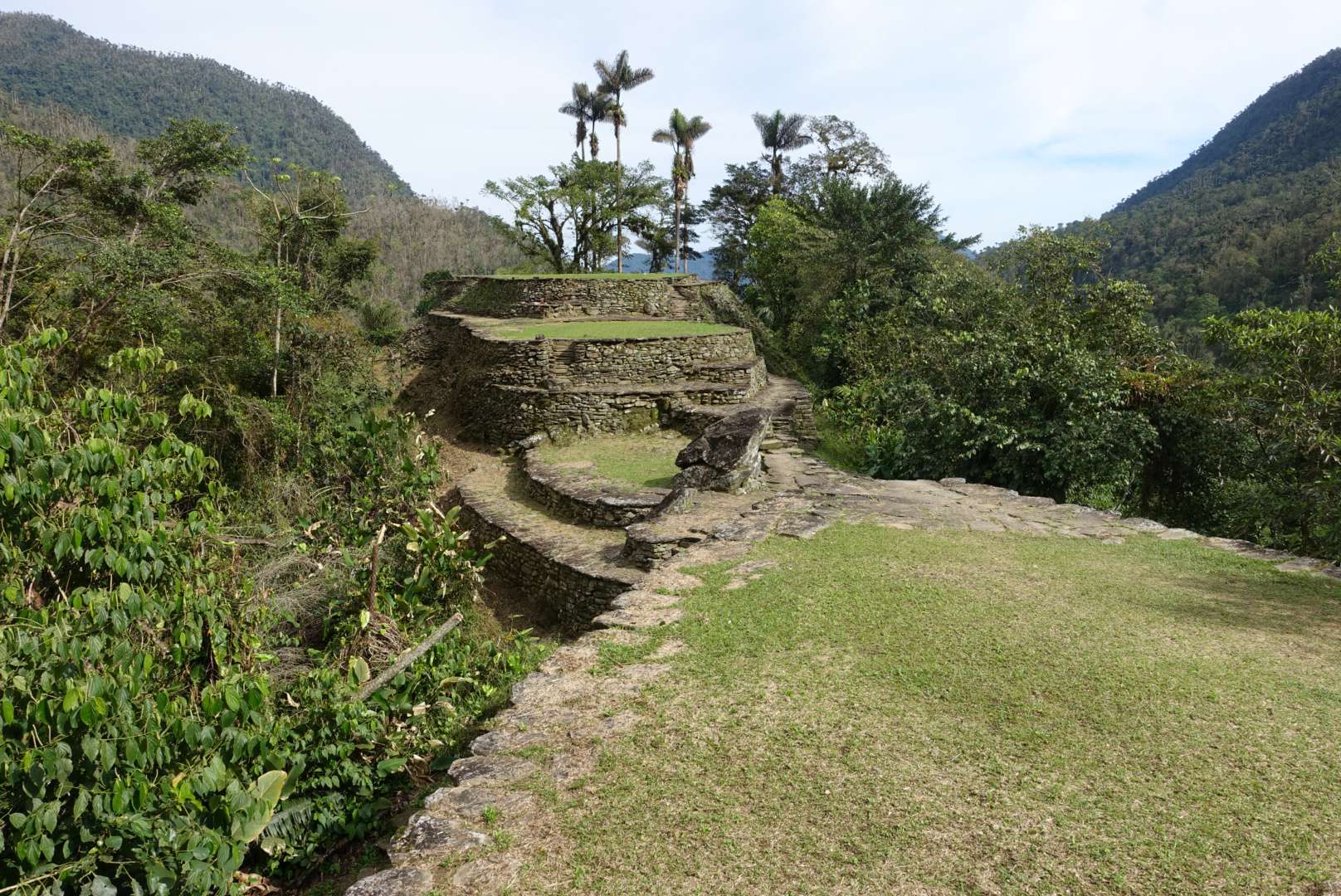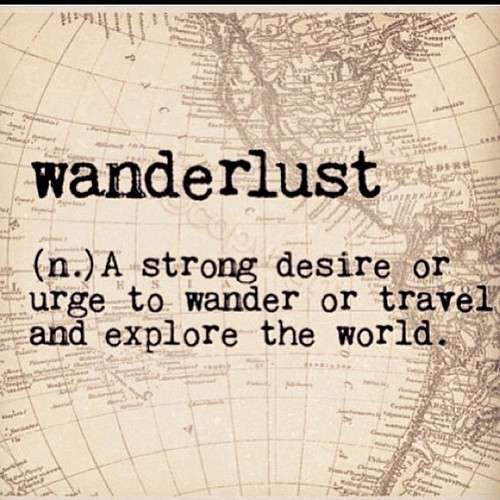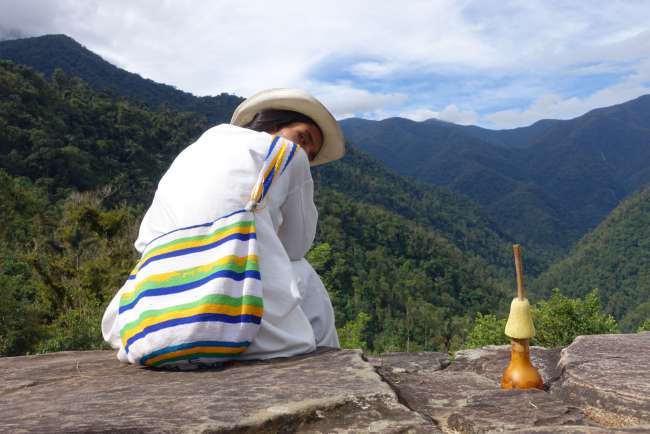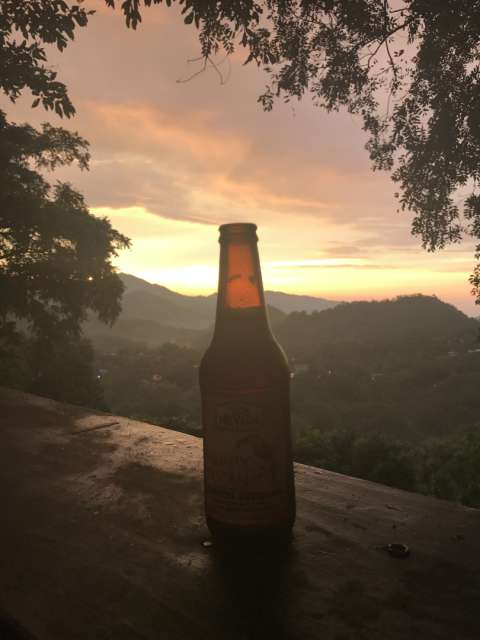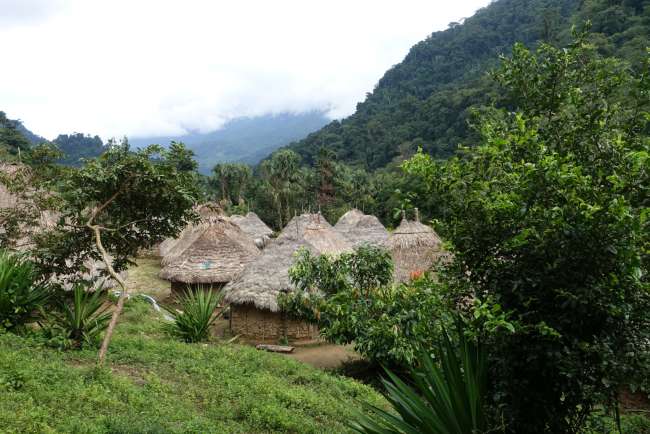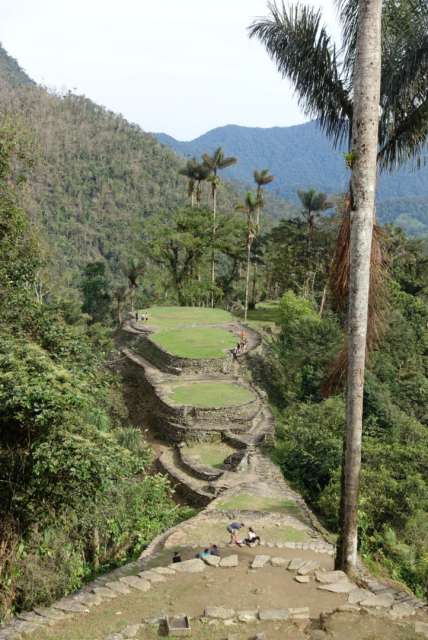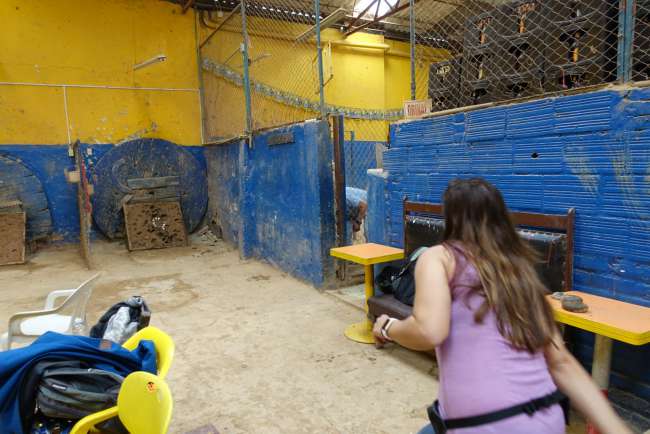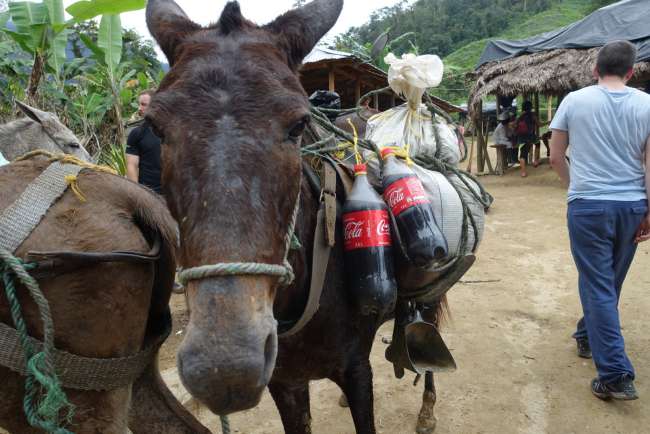Bogotá - Santa Marta - Minca - Lost City
Hoʻopuka ʻia: 19.11.2016
Kau inoa i ka Nupepa
11/18/2016
I have found the Lost City (= Ciudad Perdida). The path to get there is a multi-day hike through the jungle in the Sierra Nevada de Santa Marta to one of the largest pre-Columbian sites. I heard various horror stories of mosquito invasions, mudslides instead of roads, and rushing rivers that had to be crossed. That's why I wanted to recover a bit first, as I arrived from Switzerland half sick. Unfortunately, I still didn't feel completely well after the first few days in Bogotá, but I had already booked the flight to Santa Marta (starting point for Ciudad Perdida). But Bogotá was also not exactly relaxing. The "small" bike tour through the city, which I signed up for at the hostel, turned out to be a 5-hour tour through all the neighborhoods. In the more dangerous barrios, we simply raced through and followed the guide's instructions to stay together. In any case, I always stayed close to the two Polish-Canadian hockey players from my hostel. Near the market, we took a break to play "Tejo." It's something similar to boules, except instead of trying to hit a small ball, you have to hit the inside of a circle with a stone from about 20m away. The boundary of the circle is made up of small paper envelopes filled with gunpowder. There's no entrance fee, but it's expected that you drink at least one beer. I didn't really understand the scoring system, but hitting one of the envelopes seems to be desired - it was bangs from all directions. Since the year 2000, Tejo has been the national sport in Colombia. After the bike tour, there was ajiaco. It's a specialty from Bogotá. I'm not exactly sure if it's a chicken soup, potato soup, corn soup, rice soup, avocado soup, or caper soup. In any case, those are the ingredients I could identify. After that, I felt healthy again. The flight to Santa Marta went surprisingly smoothly. From an airline called "Viva Colombia," and for 50 Swiss francs, one could have expected something different. In Santa Marta itself, there isn't much to do. Most tourists are there because they're going to Tayrona National Park or the Sierra Nevada. Before I started the trek to Ciudad Perdida, I went to Minca. It's a small coffee village 600m above sea level. I also wanted to do a little hike there. I hadn't learned anything yet from Colombian time estimates, so we ended up taking about 10 hours on the approximately 5-hour hike. However, we took almost two hours for a lunch break at 1200m above sea level because it was so nice and cool there, and the view was simply amazing. I was with two Swiss people and an Austrian, all of whom didn't walk slowly.. The overnight camp was practically in the middle of the jungle, the house had no walls, there were only mosquito nets around the bed, and a very tropical soundscape. Back in Santa Marta, I had one more day to recover from muscle soreness before embarking on the long hike because I had dropped off my laundry to be washed and had to wait. The next morning, the cleaning ladies told me that there was a snake hiding in my clothes. They seemed a bit hysterical, although the idea of having a snake in my backpack the whole way wasn't very attractive either. But not every snake is venomous, and it was also very small. The next day, I set off for Ciudad Perdida. The hike can be done in 3, 4, or 5 days. The total 45km didn't sound like a lot. But considering the high humidity and the possibly not-so-exact directions (you live and learn), I decided on the 4-day option with Wiwa Tours, the only provider led by Indigenous people. Wiwa is a tribe of the Tayrona, the indigenous people of this region. Sewimaku was the guide of our 6-person (and exclusively Spanish-speaking) group. Like all Tayrona people, he carried his bag with coca leaves and his hollowed-out gourd with powdered shells. With a stick dipped in the gourd, they consume the alkaline shell powder in addition to chewing the coca leaves, which react with the powdered shells. Maybe a chemist can explain that to me in more detail. In any case, the Tayrona can walk for hours without eating using this method. Luckily, I still had a few granola bars in my backpack. The stick is then used to apply the spit-coca-shell mixture to the outside of the gourd, creating an increasingly larger layer that symbolizes wisdom. Sewimaku patiently answered our questions, although I wasn't always sure if my Spanish was good enough and if I understood everything correctly, but I read it again just to make sure, and the thing with the Poporo (gourd) is actually true.. The Wiwa people are all dressed in white (a mystery - all my clothes were dirty on the first day..), they all have long hair, and on average, they're about one head shorter than me. Everyone I met was very calm and friendly. Some speak good Spanish and are very open if you're interested in their culture. And they can walk far and fast for hours without eating... But even without doping, the hike was manageable. On the first day, we only had to walk about 4 hours, and there was a waterfall with a natural pool at the campsite where we could refresh ourselves. The small snake lying on the rock there looked harmless, but I was told that it could be deadly within 24 hours. Maybe the women from my hostel weren't so hysterical after all? The food was transported by mules, and we would occasionally get fresh fruits, and the river crossings were a pleasant way to cool off. Well-equipped with proper mosquito protection (and a Swiss water filter!), it was almost like a walk.. Well, you have to give up some comforts. After the second day, it didn't really matter how the clothes looked, let alone smelled, as long as they were dry. I found the city itself quite impressive. Although the houses are no longer there, the foundation walls arranged in circles and ovals as well as the staircase with over 1200 steps are well preserved. A large part of the city has not yet been excavated, and currently, the indigenous people living there are resisting that. The city was only rediscovered in the 70s by looters, then used as a grass plantation, and occupied by rebels. On the way, we passed various villages of the Kogi (also a tribe of the Tayrona). What bothered me a bit was the contact with the people there. I don't think they wanted any, but probably too many tourists have passed through. So the children ran up to us and asked for sweets. In return, we were allowed to take a photo of them. And hikers pass by every day.. I had already eaten my granola bars anyway. But there were tourists who gave the children all sorts of candies and took their picture. After that, they immediately ran away, and the adults didn't even show up. If I had known that, I would have brought more toothpaste.. The hike is definitely an experience, although not a life-changing border experience, as some people claim. Nevertheless, I have now headed towards the beach. You can relax without any pain, too.
Kau inoa i ka Nupepa
Pane
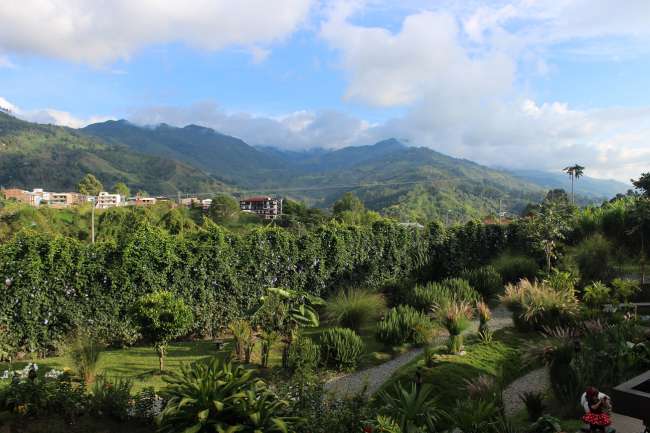
Hōʻike huakaʻi Kolomepia
